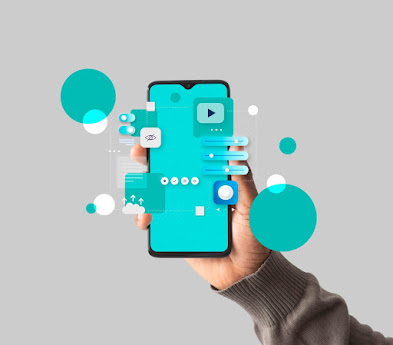Greetings, fellow tech aficionados! Today, we embark on a captivating journey through the dynamic evolution of iOS app development, a saga that has unfolded over the past decade and a half. Our story begins in 2007 when Apple unleashed the groundbreaking iPhone, ushering in a new era of mobile technology and laying the foundation for iOS.
Birth of iOS
In 2007, the unveiling of the first iPhone marked the dawn of iOS, an operating system that would redefine the landscape of mobile technology. Developers found themselves standing on the precipice of a technological revolution, with endless possibilities awaiting exploration.
The Pioneering Phase
Apps 1.0: The Humble Beginnings
The App Store made its debut in 2008, unleashing a wave of innovation that transformed the digital sphere. From utility apps to addictive games, developers reveled in the newfound opportunity to showcase their creativity to a global audience.
iOS 2.0: A Leap Forward
The release of iOS 2.0 marked a significant leap forward. Developers gained access to new APIs, enabling the creation of more feature-rich applications. Push notifications, a burgeoning App Store expanding to 62 countries, and the introduction of in-app purchases set the stage for the thriving app ecosystem we know today.
The Era of Design Excellence
iOS 7: Aesthetic Renaissance
In 2013, iOS 7 brought about a visual revolution, bidding farewell to skeuomorphism in favor of flat design. Simplicity and clarity became the guiding principles, leading to a surge in visually stunning and user-centric applications.
Haptic Feedback and 3D Touch: A Touch of Innovation
Subsequent releases introduced haptic feedback and 3D Touch, adding a tactile dimension to user interactions. These innovations not only transformed the user experience but also opened up new avenues for creative app design.
The Rise of Swift
Swift: A Developer's Symphony
In 2014, Apple introduced Swift, a programming language that reshaped the iOS app development landscape. Swift's concise syntax and powerful features made it the preferred language for developers, offering a seamless and efficient coding experience.
SwiftUI: Redefining UI Development
SwiftUI, unveiled in 2019, elevated user interface development to new heights. Its declarative syntax simplified code, allowing developers to create dynamic and responsive interfaces with ease. This paradigm shift empowered developers to focus on creativity rather than wrestling with intricate code.
Navigating Challenges
Fragmentation: A Testing Ground
As iOS evolved, developers grappled with the challenge of device and OS fragmentation. Rigorous testing and optimization became imperative to ensure a consistent user experience across a diverse array of Apple devices.
App Store Guidelines: The Rulebook
Apple's stringent App Store guidelines, while aimed at maintaining quality, often posed challenges for developers. Striking a balance between innovation and compliance became a delicate dance, with developers adapting strategies to navigate the ever-evolving rulebook.
The Rise of Swift
Swift: A Developer's Symphony
In 2014, Apple introduced Swift, a programming language that revolutionized iOS app development. With its concise syntax and powerful features, Swift became the go-to language for developers, offering a seamless and efficient coding experience.
SwiftUI: Redefining UI Development
SwiftUI, unveiled in 2019, took user interface development to new heights. Its declarative syntax simplified code, allowing developers to create dynamic and responsive interfaces with ease. This marked a paradigm shift, empowering developers to focus on creativity rather than wrestling with intricate code.
Navigating Challenges
Fragmentation: A Testing Ground
As iOS continued to evolve, developers faced the challenge of device and OS fragmentation. The need for rigorous testing and optimization became paramount, ensuring a consistent experience across a diverse array of Apple devices.
App Store Guidelines: The Rulebook
Apple's stringent App Store guidelines, though designed to maintain quality, often posed hurdles for developers. Striking a balance between innovation and compliance became a delicate dance, with developers adapting strategies to navigate the ever-evolving rulebook.
The Future Beckons
Augmented Reality: A New Frontier
The latest iOS iterations have placed a spotlight on augmented reality (AR). ARKit, Apple's AR development framework, has empowered developers to create immersive and boundary-pushing AR experiences. The integration of AR into everyday apps hints at a future where digital and physical realities seamlessly coexist.
Machine Learning and SiriKit: Intelligent Evolution
The integration of machine learning and SiriKit has given iOS apps a cognitive edge. From predictive text suggestions to voice-activated commands, iOS apps are becoming smarter and more intuitive, enhancing user experiences and paving the way for a more interconnected digital ecosystem.
Conclusion
As we conclude our journey through the evolution of iOS app development, one thing is clear: the digital frontier is ever-expanding. From the humble beginnings of the App Store to the sophistication of SwiftUI and ARKit, each chapter in this saga has been marked by innovation, challenges, and the unwavering spirit of developers.
For all the aspiring iOS app developers in Chennai and beyond, the future is filled with exciting possibilities. Embrace the challenges, stay curious, and let your creativity soar as you contribute to the ever-evolving narrative of iOS app development.





